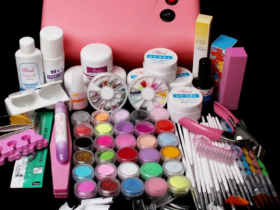What are the options for laying tiles in the bathroom? The answer to this question is invariably occupied by those who start repairing in the bathroom, because this or that layout of the tile can visually increase or decrease the room. About what techniques help to achieve a similar effect, and is described in the article.
Options for laying tiles in the bathroom — increase the area of the room
The video shows how to put the tile in the bathroom
Big problem, many bathrooms are a small area. This is especially true for old houses, the so -called «Khrushchev», where the bathroom has scanty dimensions. However, there are several tricks that will help to visually increase the room. The first rule reads — tiles in small rooms should be light. If you certainly want dark tones to be present in the bathroom decoration, in the middle of the wall or a little higher you can lay out a horizontal strip of tiles, the color of which is several tones darker than the shade of the “main” tile. This technique, in addition to giving a certain style to the room, will also “play” the visual expansion of space.
The size of the tile in a small room should also be small. A mosaic tile or ordinary tile (or porcelain) in size is not more than 15×15 cm is suitable here. If you have a rectangular tile at your disposal, then it must be put so that its long side is parallel to the floor. Will increase the area and glossy tiles, while matte, on the contrary, will reduce. Mirror tiles on one of the walls will also help to expand the space, as if eroding the boundaries. However, when laying it, it should be remembered that this material requires especially careful care, since each drop of water will be noticeable on it.
It is worth remembering that techniques such as laying tiles in width and laying out the horizontal strip, in addition to expanding the space, unfortunately at the same time will reduce the height of the room.
Contrary to common opinion, diagonal styling will not solve the problem of small area. Such a technique “works”, oddly enough, only in large rooms, in small ones it does not give any effect.
We visually raise the ceilings
Fundamentals and technologies of laying ceramic tiles — video
No less frequent problem is low ceilings. In this case, several other techniques are used. The first of them is the laying of a rectangular tile so that the parallel floor is its narrow side. It copes well with the task of “pulling” the premises and such a technique as laying out vertical stripes from contrast tiles. Sometimes all four corners are also designed in this way — this gives the effect of the presence in the space of the columns. However, when using this method, it is worth remembering that too frequent and too bright stripes will give the exact opposite effect.
The next trick that helps to make ceilings above is the location of decorative inserts not in the middle of the wall, but at eye level or slightly higher. To make ceilings visually higher will help and laying on all the walls of a plain light tile. Of course, such a technique may seem boring, but you can give the interior of brightness in other ways — for example, by installing a bright color plumbing, or adding any accessories to the bathroom.
Popular technique with laying walls with tiles of two colors, separated by a border suitable in style and color, will also help to cope with the task. In addition, in small bathrooms, such a trick will “play” to increase the area. However, if the area of the room is large enough, the reception will give the opposite effect and the ceiling will “fall” even more. And another way to “stretch” the room is the decoration of the walls of a dark shade with tiles, and the floor is light (possibly even with absolutely white) tiles. With this method, attention will be distracted from the ceiling and it will seem to dissolve in space.
Choosing color and style
There are three ways of laying tiles:
Seam in the seam;
in a run;
diagonally.
We will not dwell on them in detail, we will only say that it is best for a beginner master to lay out the tile in the first way, since the other two require certain skills.
There is also a modular method, when using which tiles of different sizes are used to decorate walls or floor. It is very difficult to choose colors yourself for such a layout, so if you have chosen this method, it is better to consult with a professional interiors designer. However, if you still decided on the modular version, it should be remembered that the sides of all the tiles must be multiplied by each other. In addition, the texture of the tile should also be the same.
There are colors that, according to psychologists, help to relax — they are most often used to design baths. It is beige, honey, yellow, blue and light green color. It is not necessary to use the tiles of “acidic” shades, since it will quickly get tired and will irritate vision.
Now let’s talk about design. The interior of the bathroom in the oriental style is a combination of bright saturated colors, for example, gold, red and blue. This style is not suitable for small bathrooms, since it itself implies a certain scope. Tiles for a classic interior — always neutral, as close as possible to natural color. In such a room, porcelain tiles will look more appropriate, and this applies to the floor and walls. Inserts of gold or copper tiles will also help to emphasize the “classic” interior.
The style that gives maximum scope for creativity is called modern. It allows you to use any colors — the main thing is that they are clean and without halftones. For example, the yellow color in such a room should be yellow, and not at all ocher or greenish. Country -based bathroom is muffled natural colors — lavender, sea, olive or pinkish. And finally, minimalism in the style of minimalism is usually black and white color scheme.
In a word, no matter what color and style you choose, the main thing is that you and your family members like it and. Only in this case, the bathroom will become a place of real recreation after a busy day.













Оставить коммент.